Media | Articles
Lotus Operandi: The Emira Is the Best Way to End an Era
Launched in 2022, the Lotus Emira was the first new sports car that Lotus produced since the Chinese conglomerate Geely took a controlling stake in the company in 2017. It is bigger, heavier, and all around “more” than the Elise and Evora that it replaced. Besides the tall task of succeeding those cars, it is also reportedly the last gas-powered Lotus we’ll get of any kind.
With these factors hanging over it, not to mention the recent news that Lotus has suspended exports to the United States in the wake of recent tariffs, the Emira is that much more critical for defining what this moment means for the brand. Given that this already narrow window of opportunity was closing quickly, we decided to get our hands on an Emira before it was too late. Carpe press car!

We recently spent a week with a Seneca Blue 2024 Lotus Emira First Edition specced with the supercharged Toyota V-6 and a six-speed manual (that engine is also available with a six-speed automatic, or you can buy an Emira with a turbocharged AMG four-cylinder and an eight-speed automatic) to bask in some bittersweet old-school Lotus driving before the new breed of electric cars and SUVs arrive.
The Emira is not a new model, but it is the last of its kind, and that prompts a couple of questions: Is it timeless like the Elise, or will it be remembered as simply the last time a Lotus had a gas engine? Where will it slot into the wider sports car canon? We drove our tester from the clogged concrete highways of Los Angeles up into the high-altitude forests that hug the sprawl in search of answers while sending off ICE-era Lotus-as-we-know-it with a bang and some supercharger whine.

Lotus claims that a unique platform underpins the Emira, but it’s basically a tweaked version of the Evora chassis, which itself was a tweaked version of the Elise’s, which can be traced back to the ‘90s. In other words, it’s a familiar, if optimized, platform. And so is its means of propulsion, which continues the lineage of supercharged Lotus-tuned Toyota engines that date back to the second-generation Elise and Exige.
Marketplace
Buy and sell classics with confidence


The Emira’s 3.5-liter V-6 is very similar to the unit in the old Evora, but this iteration had better around-town manners than we remember while still revving to a respectable 6800-rpm and delivering aural nirvana along the way. Sure, a Camry-sourced V-6 doesn’t sound exciting on paper, but it’s another animal entirely when it’s audibly gulping air from a huge scoop next to your elbow and winding up a supercharger that sounds like God’s own power tool.
Rhetorical questions aside, what’s the most unique feature of the Emira, you ask? The styling, inside and out. The Evora was an exotic-looking and well-packaged car, but the Emira’s debut instantly made it look a decade older. Many cues are taken from the brand’s halo hypercar—the 2000-horsepower all-electric Evija—but the fact that the Emira’s further down the ladder doesn’t render it a store-brand “we’ve got that at home” version. At its roughly $100K price point, there’s really nothing out there that looks as sexy, or as extreme, as the Emira.

And it is extreme. Two prominent character lines slice up the profile, while a prominently arc-shaped trailing edge and scoops galore demand your eye’s attention. You can see the engine through the rear hatch glass. The front end (there is no frunk, as this space is occupied by radiators and other cooling system components) looks like it’s wearing a svelte plate carrier between the hunter-eyed headlights. It feels like you’re reaching through a foot of bodywork to open the doors, with the flush handles nestled deep into the concave duct that directs air to the engine.

The overall design is made up of so many strong concave and convex forms that you’d expect it to look absurd from any angle besides the ones used for the brochure. But it doesn’t. It’s the kind of car that breeds attention deficit disorder in photographers—you think you’ve lined up the best angle only for the next composition two steps to the left to blow your mind all over again. Put simply, this is a beautiful car that looks better than most of the supercars on the market that cost multiples more.

The revelations continue in the cockpit, where the materials and their fit and finish should be enough to stifle the typical jokes about kit-car quality interiors held together by chewing gum. This is a capital N nice place to be, and it’s even deceptively roomy. During the few hundred miles we covered, the Emira didn’t present any of the typical Lotus creaks and squeaks, even after traversing the rough pavement of the inner city. As is the norm now, the Emira HVAC controls and volume are operated via physical buttons and knobs, while the rest is handled by touchscreens and touch-capacitive buttons. We experienced some glitchiness from the steering wheel (the volume controls are near enough to the menu navigation arrows that you often get two reactions for the price of one push), but the rest of the interior functions worked just fine.


Most of those functions are handled via a 10.25” center console screen, while a 12.3” digital dash display ahead of the driver offers up the rest of the info. Like usual, we were happy to find Apple CarPlay and Android Auto options for phone connectivity. And, while you shouldn’t buy a mid-engine sports car for its stereo, the 560-watt KEF Audio system was surprisingly strong, although we hardly wanted to use it.
Why? Because this is among the best-sounding powertrains with fewer than 12 cylinders. It’s not just the exhaust note, either: The V-6 gurgles and pops around town, develops a pleasant growl once you get out of the tachometer’s fuel-efficient territory, and then somewhere around the 4-5K rpm mark, the induction even supersedes the crescendo of the supercharger whine.
Specs: 2024 Lotus Emira V-6 First Edition
Price: $99,900/$105,930 (base/as-tested)
Powertrain: 3.5-liter DOHC 24-valve supercharged V-6
Output: 400 hp at 6800 rpm, 310 lb-ft of torque at 3,500 rpm
Layout: Two-door, mid-engine rear-wheel drive liftback coupe
Weight: 3270 pounds
0–60 mph: 4.3 seconds
EPA-rated fuel economy: 19 mpg combined / 16 mpg city / 24 mpg highway
Competitors: Porsche Cayman, Chevrolet Corvette
So it looks good, feels good, sounds good. How does it drive? If you read any of the Emira reviews when the car debuted a few years ago, you know the answer already, but let’s say it again: This is a true Lotus, and one of the most fun street cars you can buy today. The hydraulically assisted rack and pinion steering—a rarity now—communicates through the wheel in a dialect that won’t disappoint anybody bar a few Exige diehards. Our Emira was optioned with the more GT-oriented “Touring” suspension rather than the “Sports” option, and while it did absorb and smooth out some road wrinkles, it never left us wanting a more hardcore setup on the street. It’s still plenty stiff, but not to the point where you start planning your commutes based on road surfacing.
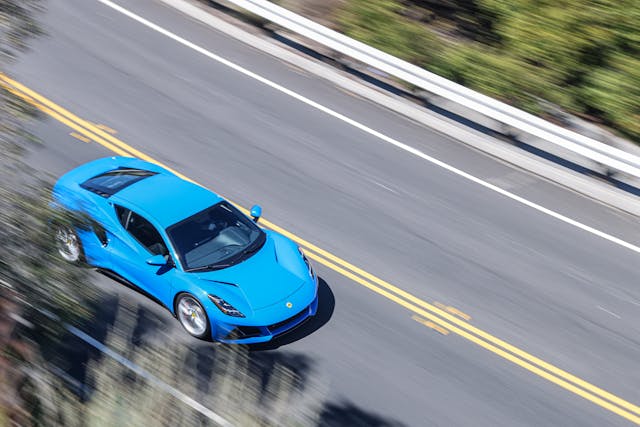
And speaking of commuting, it’s doable here, even with the manual. Yes, the pedal box is oriented towards the center of the car, and the stiffly sprung pedals are tiny, and the shifter requires some precision, but the engine is highly tractable and behaves well around town. It’s more than worth a little bit of a leg workout in the city to enjoy the full range of control afforded by the six-speed. There’s enough ground clearance to drive more or less worry-free into and out of angled parking lot entrances, the air-conditioning works great, the stereo is there if you need it, and the only real telltale of the underlying capabilities is the occasional purge of hazy heat from the radiators up front.
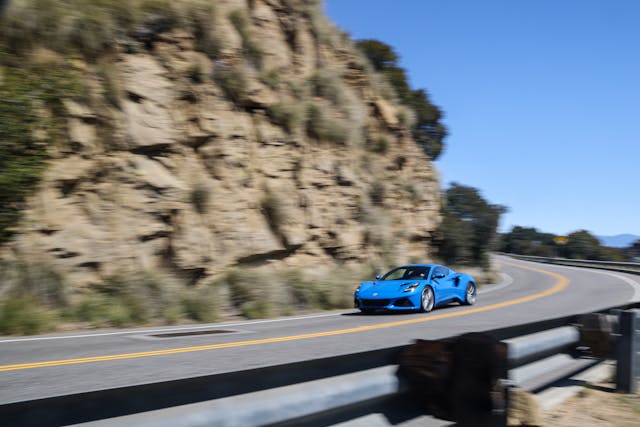
The Emira is obviously not a highway missile or an opulent c-suite coddler, but it works well enough as a daily driver that it can be your weekday and weekend car. The cabin storage space even has room for two cupholders(!) in addition to a behind-the-seat cargo area (in place of the Evora’s tiny rear seats), and deep door sill pockets. The trunk storage is big enough for a pair of carry-ons, but we wouldn’t recommend putting anything heat-sensitive back there because it gets quite hot in those 5.3 cubic feet.
But again, you don’t buy a two-door Lotus to haul stuff. You buy it to drive it, and few cars drive like this one. The steering is as you’d expect and hope from a Lotus, with the front end’s willingness to shift vectors enhanced by the ease of placement thanks to the tall peaks of the wheel arches visible through the windscreen. It’s easy to drive at seven tenths, and if you push it further, you’re rewarded with a car that isn’t doing the rest of the work for you. It will under- or oversteer if you’re sloppy, but it gives fair warning before things get hairy. It won’t bore, and it won’t bite.
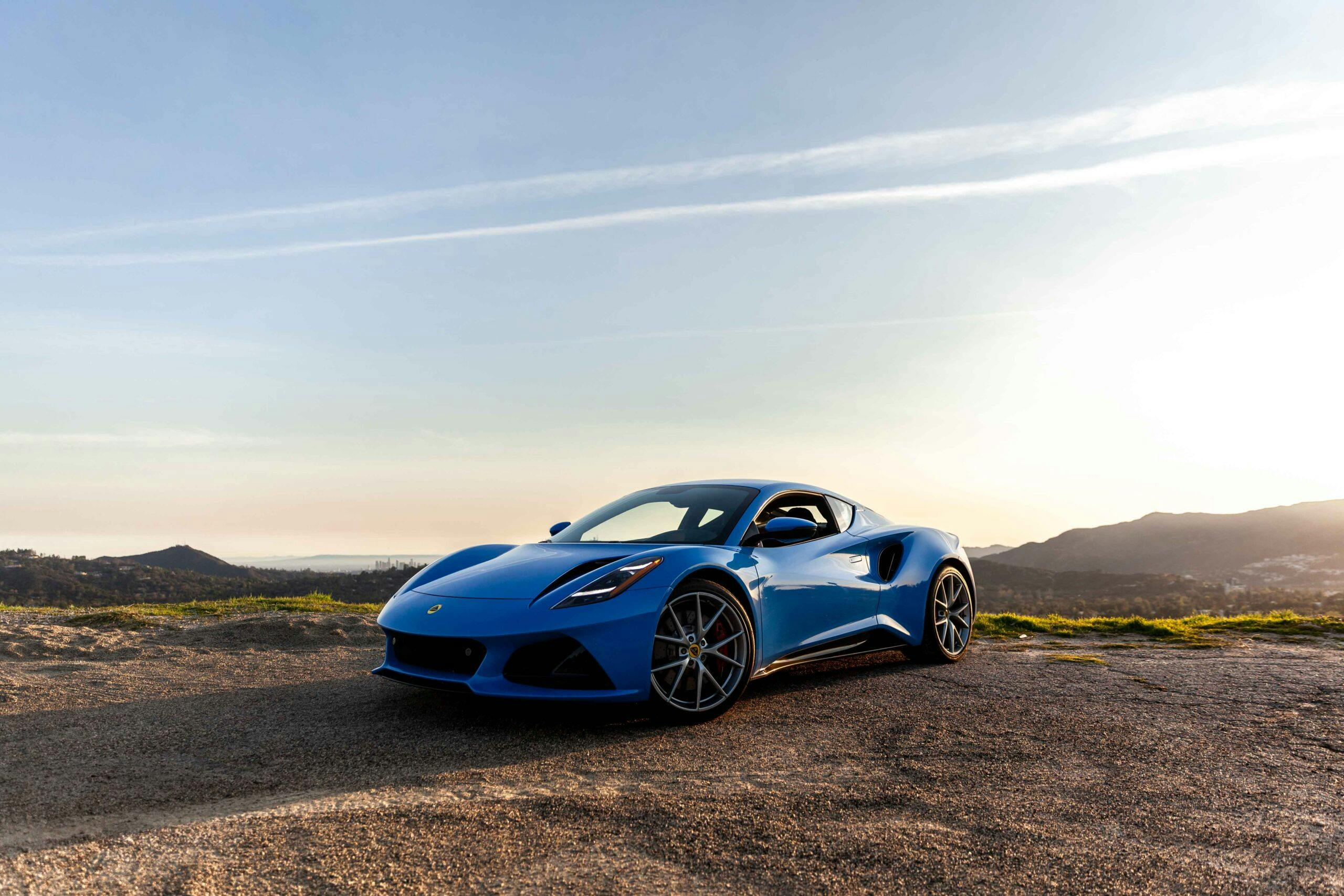
The Emira is quick enough to make on-ramps fun, but 400 horsepower isn’t a lot these days. The car is better for not having pursued massive numbers, though. Combined with the relatively short ratios of the six-speed, the humble-for-2025 power figures make for a level of driver activity and engagement that doesn’t require track days or highly illegal speeds. As for containing your pace, the Emira’s brakes perform capably in spirited driving, though they do require some precision footwork to operate smoothly when you’re just poodling around between suburban stop signs.
If forced to nitpick the Emira experience, we’d like an option to reduce the exhaust burbling that’s present even in the softest of the three drive modes, some better insulation in the trunk area, a bit more bolster to the seats, and a simple ignition button devoid of the wannabe fighter jet cage over the top of it—we found ourselves operating the button by just pushing a pinky in between the cage instead of lifting it up.
But those are minor complaints about a car that’s hard to find fault with. As with any car that marks the end of an era, the stakes were high for the Emira, and “the last true Lotus” was sure to fall under intense scrutiny. On all counts, the Emira is a successful sendoff. And even if we had anything truly negative to say, you probably wouldn’t be able to hear us over the supercharger anyway.
2024 Lotus Emira V-6 First Edition
Highs: A mid-engine six-speed Lotus that looks fantastic and isn’t too fast to enjoy in the real world.
Lows: Some lag and imprecision in the infotainment controls. Trunk storage is limited.
Takeaway: Want a true driver’s car that isn’t a Porsche? And that you can just as easily commute with as you can rip through canyons? This is it.

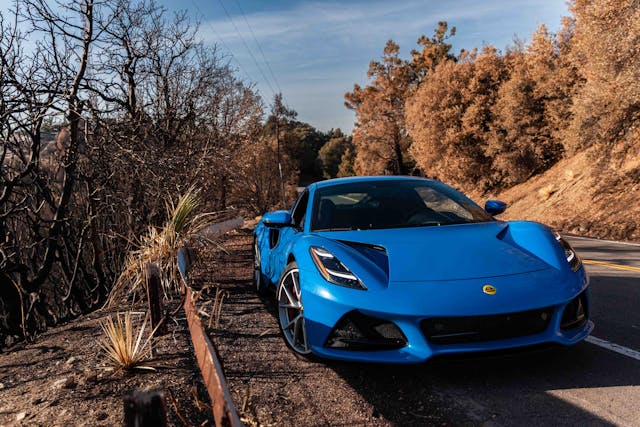
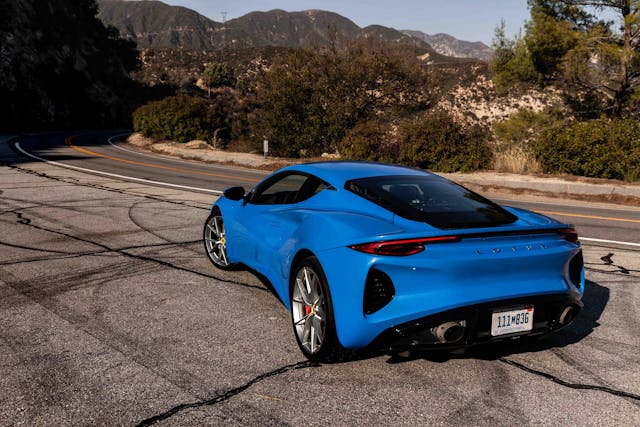

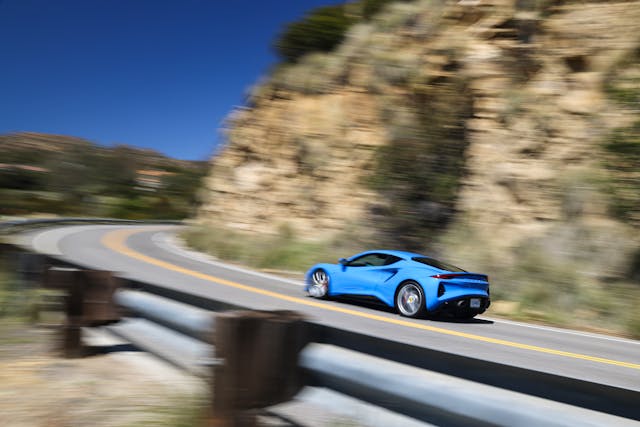
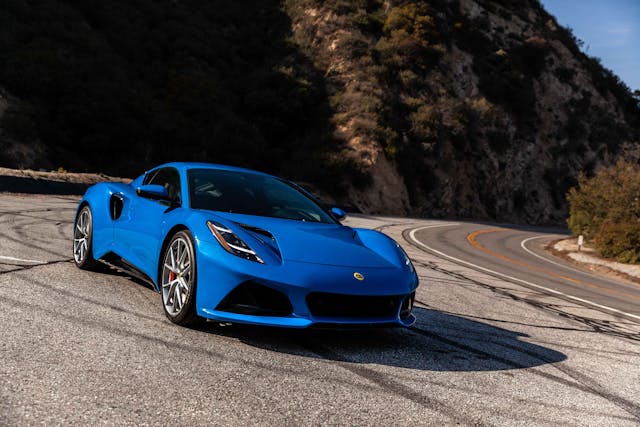



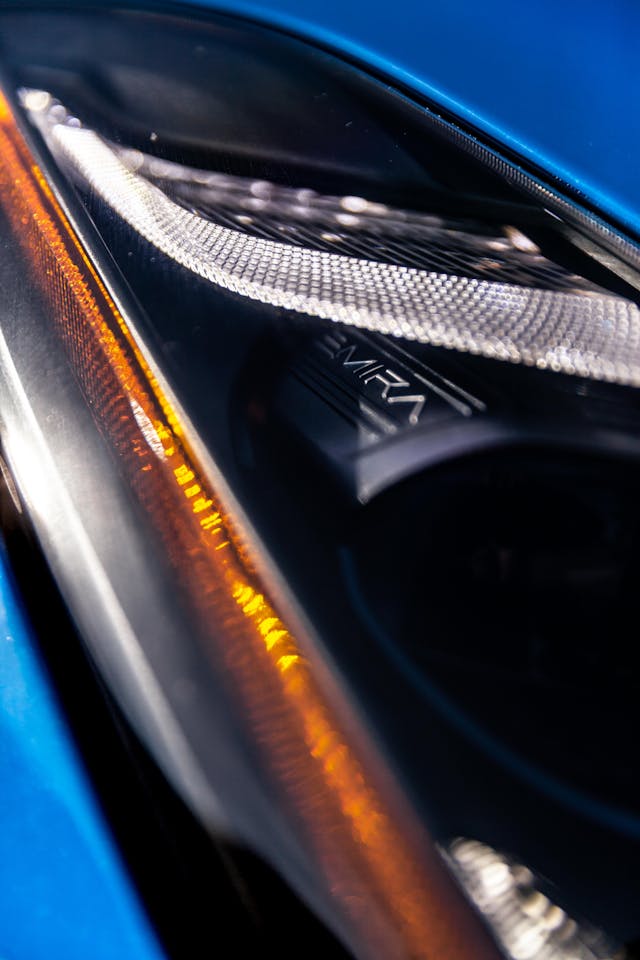












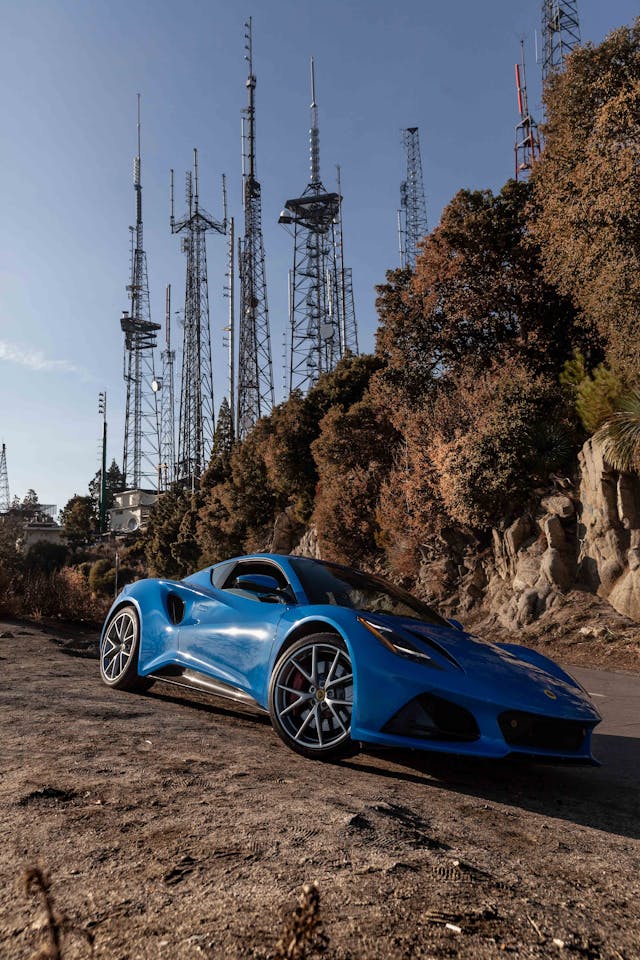

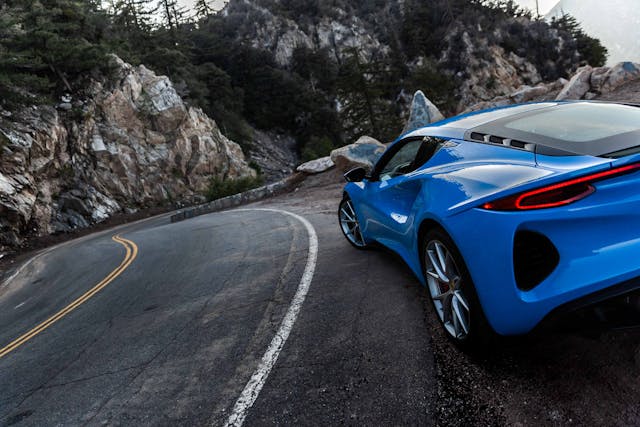
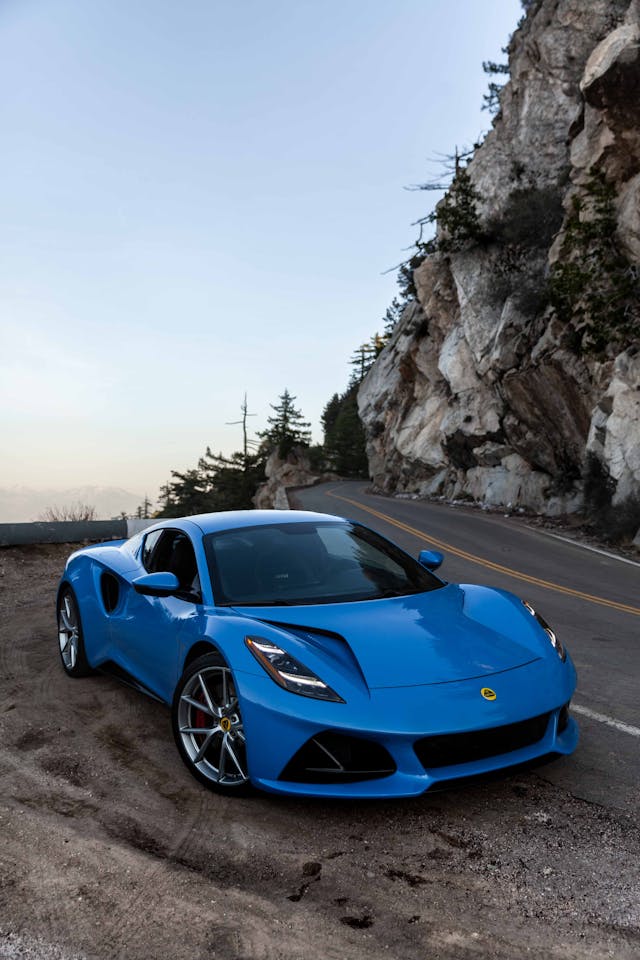



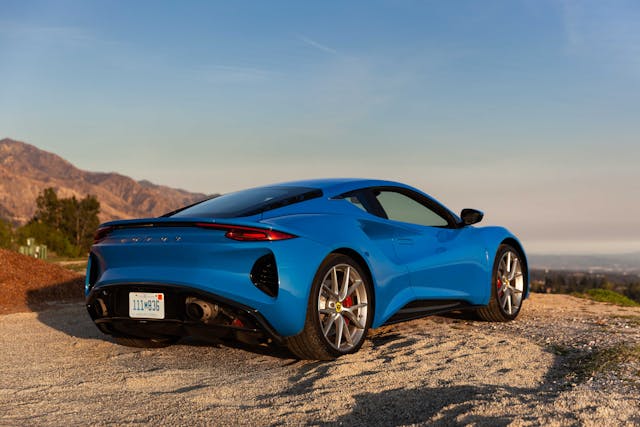
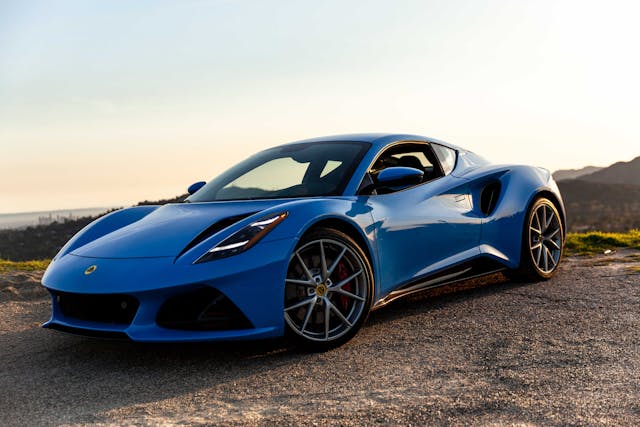







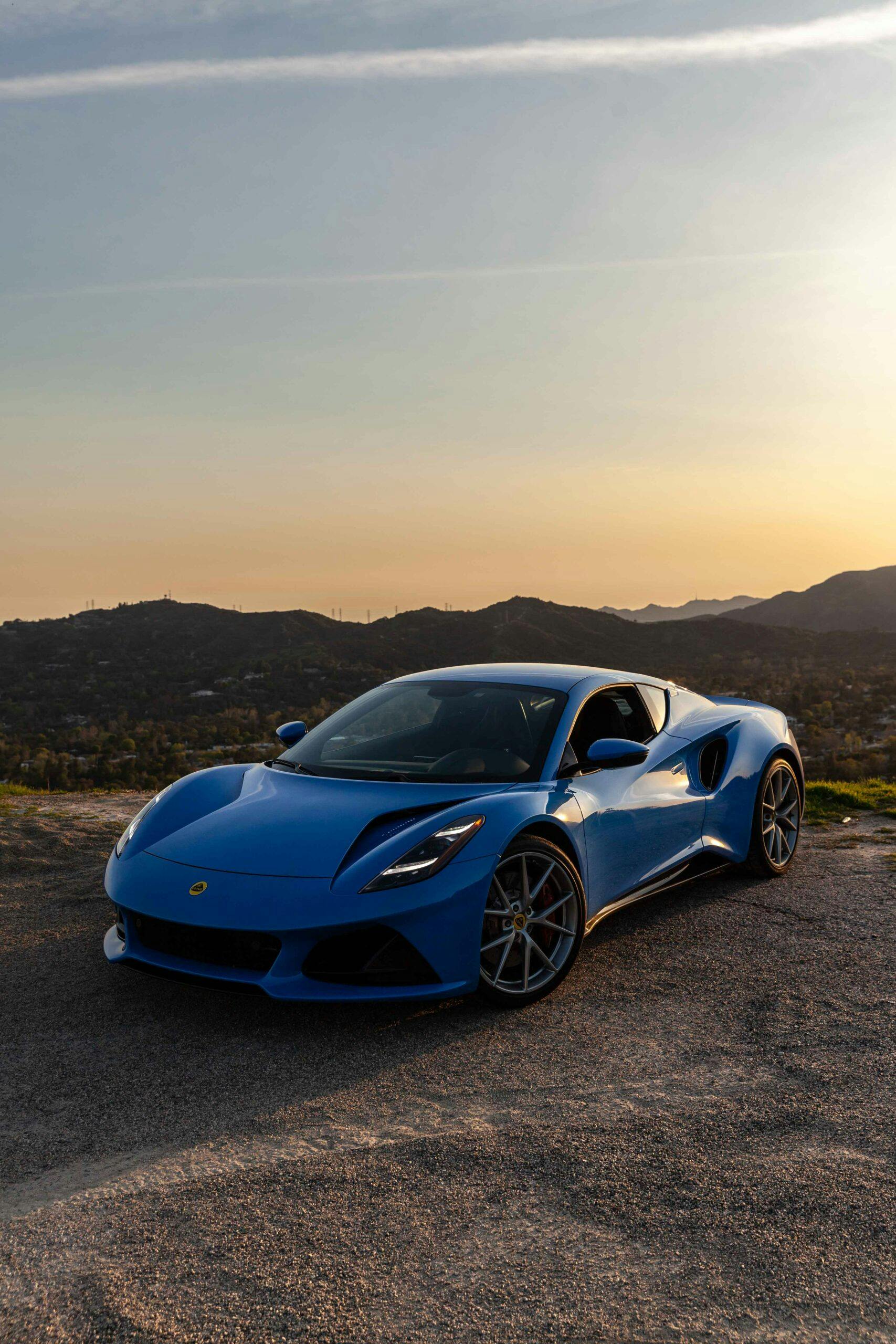
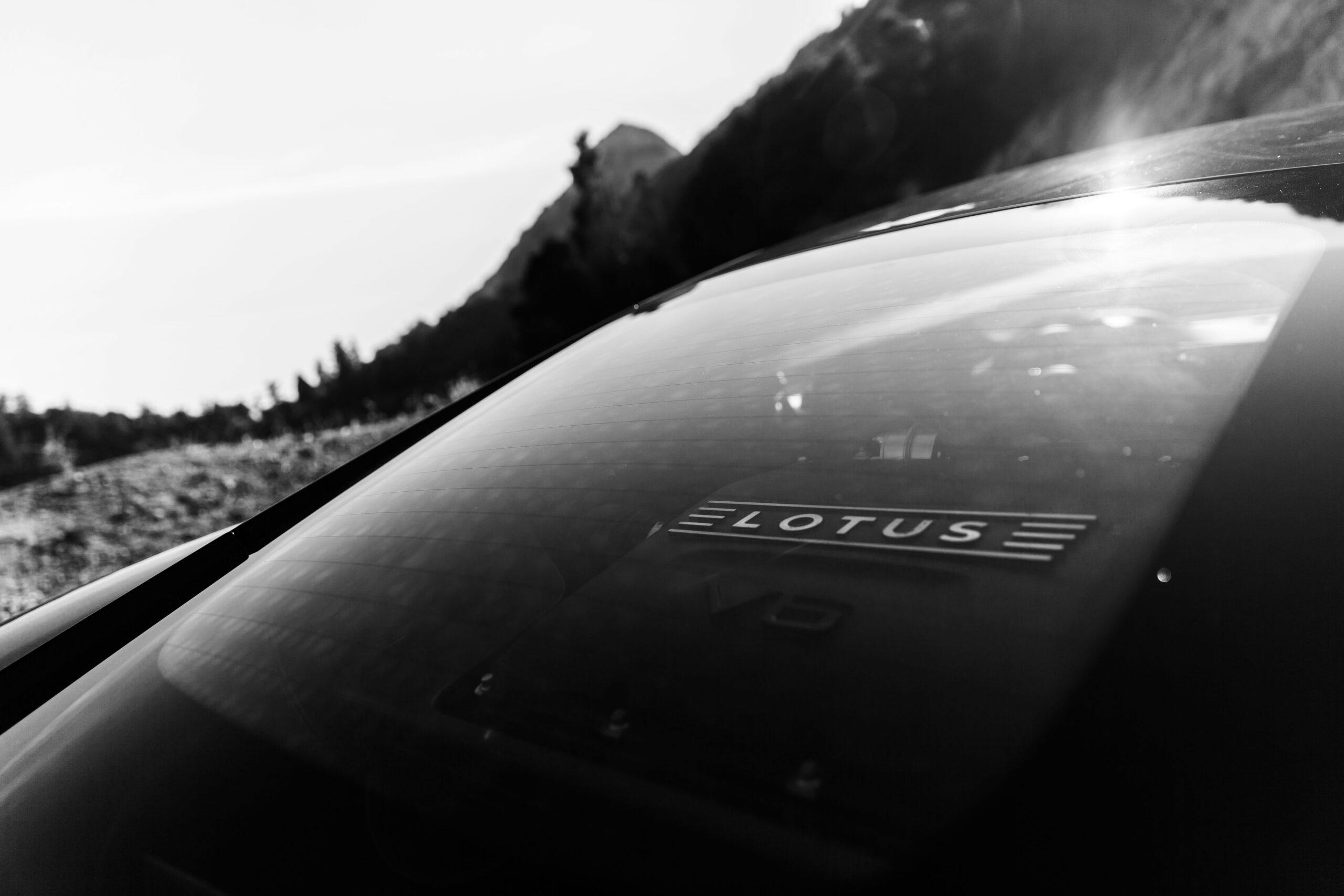













































I have not seen one outside of a dealer. It seems to be a nice car. When it goes it will be missed but by who?
Last gas powered Lotus? Lotus 1952-2025 RIP.
Really?
A C8 Vette is the best choice in this category
Yes, if you want something larger and heavier.
..or if you don’t want something as pretty or a manual.
I am going back and forth on this one, I didn’t want the “First Edition” , figuring there would be some nice versions to come after. Still holding hope for a gold leaf, JPS, or the Green and yellow strip classic lotus look.
To me this is a very good value as the 3 pedal Porsche Carrera T is quite a bit more money and a much bigger, heavier car. There really isn’t anything like the Lotus out there at the moment.
Sadly the days of a lightweight car which rewards you for the hustle are ending…. Maybe they already have
Reading the story makes the point about sports cars. They are about 4 things: looks, speed, handling, engine personality. Take away one of those and the three legged chair falls down. Take away two and you’ve got no future.
give me analogue speedo and tach and i’d be at the dealers in a flash. (not stateside so i’ve less concern about tariffs.)
Looks sort of like a 3/4 scale Corvette from the front. From the side it has nice lines but seems compressed in length. Not sure why we have to endure black and white pictures of a car with color or those semi blurry photos. We’re here to see a vehicle not an art show.
Noise, poise, pose and goes.
Indeed. All the things.
My 2004 Porsche Boxster S delivers on all of these, with two huge trunks. And a top that folds down.
So.
Much.
Winning.